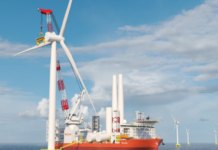As I’ve discussed previously, things haven’t been easy of late for alt energy stocks, especially those of the pure-play kind. A few days ago, I was asked which, if any, alt energy stocks I could recommend in this environment. My answer was: none. While people continue to go on television claiming that alt energy’s problem has to do with falling oil prices, in my view the real risk at the moment has do with financing – financing for the companies producing the technologies and financing for their customers. The two business models are simultaneously under attack: for technology firms, the model whereby a company burns through loads of cash in the hopes of eventually commercializing a homerun application is dead, and for power producers and households installing solar panels and wind turbines current credit costs don’t permit the necessary high degrees of leverage. As I’ve argued before, a temporary (i.e. 12 to 18 months) drop in oil prices will not phase policy-makers, and most of the demand right now is policy-driven.
So, for now, I would stay away from most pure-play alt energy stocks, at least until capital markets settle down and credit markets really normalize. However, as we’ve pointed out on many occasions, there are a wealth of companies out there with diversified revenue streams and appreciable market capitalizations that are moving into alt energy and cleantech. The dramatic drop in equity markets over the past few months has made the dividend yield on some those firms look quite attractive. For long-term investors, the advantage of purchasing a stock with a high dividend yield is that, provided the company can continue paying the dividend, you lock in an attractive yield on your security and you get to benefit from capital appreciation once markets recover.
The table below lists a few diversified stocks with exposure to alt energy that currently have an attractive dividend yield (>4%). The next step would be to look into the ability of the firm to maintain this yield throughout the bad economy.
| Name (ticker) |
Div. Yield (%) |
Main Alt Energy Areas |
| General Electric (GE) | 7.20 | Wind turbine manufacturing; wind park ownership |
| Otter Tail Corporation (OTTR) | 6.30 | Power generation; wind turbine components (DMI) |
| Portland General Electric Co. (POR) | 5.40 | Power generation with strong exposure to wind |
| Xcel Energy Inc. (XEL) | 5.10 | Power generation with strong exposure to wind |
| The Timken Company (TKR) | 5.00 | Bearings for wind turbines |
| Koppers Holdings (KOP) | 4.10 | Railways ties and utility poles (treated wood) |
Besides Otter Tail, the names in this table are not typically labelled "green energy" or "alternative energy" stocks. Most of the pure-plays pay no dividend. As stated above, a necessary next step would be to look into these firms to see if they will be able to maintain this dividend.
DISCLOSURE: Charles Morand does not have a position in any of the securities discussed here.
DISCLAIMER: I am not a registered investment advisor. The information and trades that I provide here are for informational purposes only and are not a solicitation to buy or sell any of these securities. Investing involves substantial risk and you should evaluate your own risk levels before you make any investment. Past results are not an indication of future performance. Please take the time to read the full disclaimer here.









I sold my shares of GE when I realized that their financing business has been growing and will be a huge thorn (possibly a bullet) in their side. They will likely be spinning off some of their alternative energy businesses, including A123, to stay solvent. And of course asking for bailout funds.
Here’s an article worth reading before you invest in (or hold) GE: http://xinkaishi.typepad.com/a_new_start/2008/10/fortune-ge-under-siege-.html
Yes, good point Lisanne. The financial services division has been at the center of their problems.
I’ve never invested in GE because I find the company too difficult to get my head around, although they have certainly become a heavyweight in the wind power business in the past few years.
If you wanted to invest in GE as a yield play here, the question would be: how committed is management to ensuring this common dividend is maintained? That’s a question to which I don’t have an answer.
Great article! I’ve included it for a featured post on Friday for my readers.
Cheers,
DA